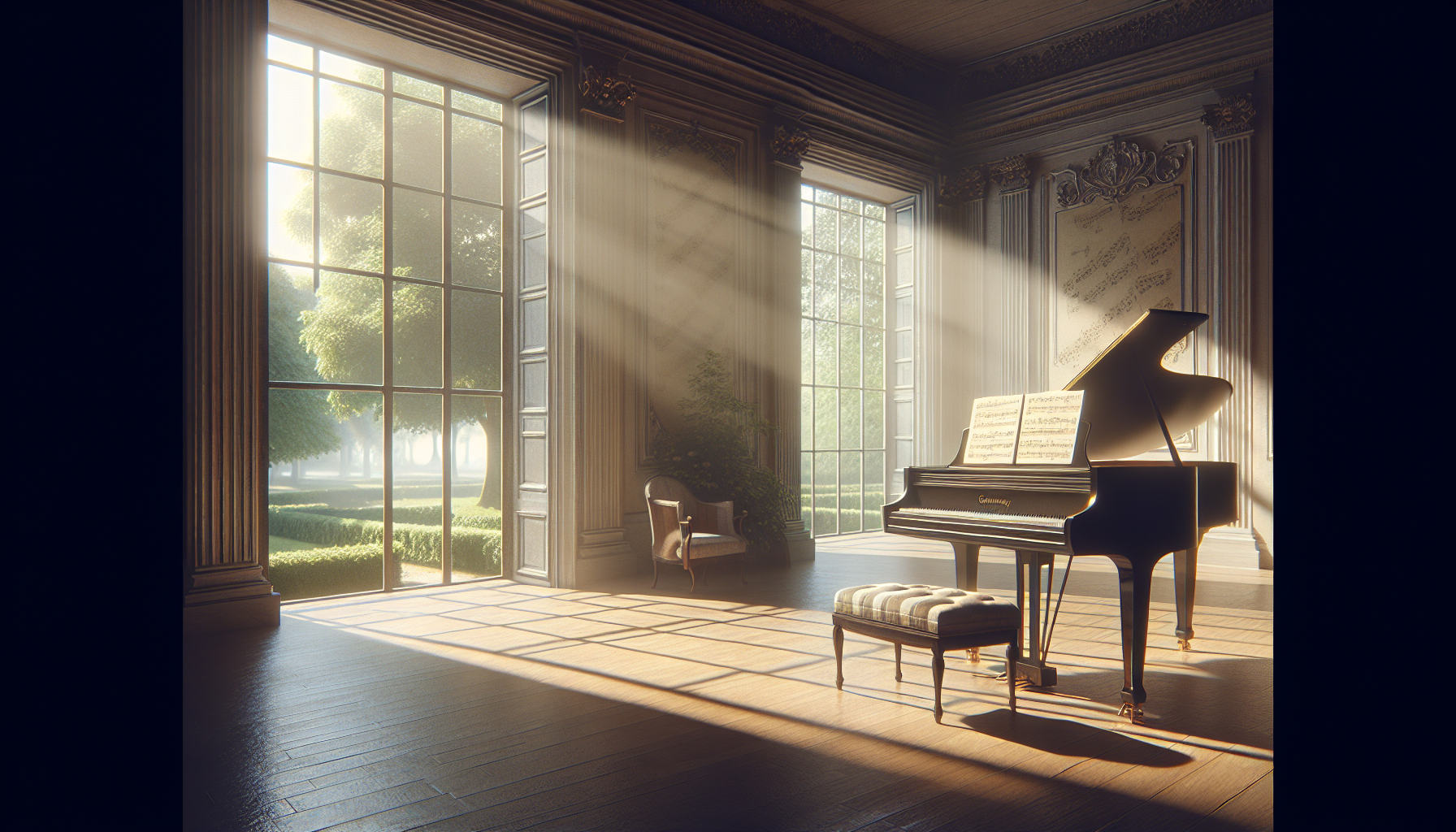French composer Erik Satie’s Gymnopédies are among the most recognizable pieces in the realm of classical music. Composed in the late 19th century, these three piano pieces continue to captivate audiences with their simplicity, emotional depth, and meditative quality. Their ability to evoke a serene and introspective atmosphere makes them a subject of fascination not only for music enthusiasts but also for those seeking solace and mindfulness in today’s fast-paced world.
The Origins of the Gymnopédies
Erik Satie composed the Gymnopédies in 1888, a time of great artistic exploration and innovation in France. Satie, known for his eccentric personality and unconventional approach to music, introduced these pieces as a radical departure from the complex and ornate compositions that dominated the Romantic era. The title ‘Gymnopédies’ is derived from an ancient Greek festival where young men danced naked, celebrating physical grace and simplicity. This connection to antiquity hints at Satie’s desire to strip music down to its essential elements.
Musical Characteristics
- Simplicity: The Gymnopédies are characterized by their simple, repetitive melodies. Satie employs a minimalist approach, using gentle, flowing rhythms and sparse harmonic progressions that create an atmosphere of tranquility.
- Tempo and Rhythm: The pieces are marked by a slow tempo, often described as lento or andante, allowing listeners to savor each note. The rhythm is steady and unhurried, inviting a meditative state.
- Harmony: Satie’s use of unconventional harmonies and modal scales adds a sense of mystery and introspection. The frequent use of unresolved chords leaves a feeling of openness and possibility.
Emotional and Meditative Impact
The transformative power of the Gymnopédies lies in their ability to evoke a range of emotions while facilitating a meditative state. According to Classic FM, the pieces “capture the essence of melancholy and introspection,” allowing listeners to explore their inner thoughts and emotions. The music’s simplicity acts as a blank canvas, enabling personal reflection and emotional release.
“Satie’s music was a precursor to ambient music, providing a backdrop for contemplation and meditation,” notes musicologist Robert Orledge in his study of Satie’s works.
The Modern Appeal of Satie’s Gymnopédies
In the contemporary world, where stress and anxiety are prevalent, the Gymnopédies offer a respite from the chaos. Their calming effect has made them popular in various settings, from yoga and meditation sessions to film scores and relaxation playlists. The music’s timeless quality transcends cultural and temporal boundaries, making it relevant to audiences worldwide.
Integrating Gymnopédies into Mindfulness Practices
Practitioners of mindfulness and meditation often use music as a tool to deepen their practice. The Gymnopédies, with their soothing melodies and introspective mood, can enhance these practices in several ways:
- Focus: The repetitive nature of the music helps anchor attention, allowing individuals to focus on their breath or bodily sensations.
- Relaxation: The gentle tempo and harmonies promote relaxation, reducing stress and tension in the body.
- Emotional Exploration: The evocative quality of the music encourages emotional exploration and self-awareness, facilitating a deeper understanding of one’s thoughts and feelings.
The Legacy of Erik Satie
Erik Satie’s influence extends far beyond the Gymnopédies. During his lifetime, he was a pivotal figure in the avant-garde movement, collaborating with artists like Claude Debussy and influencing composers such as John Cage and Philip Glass. His approach to music as an art form that transcends traditional boundaries paved the way for new genres and styles.
Satie’s work continues to inspire musicians and composers today. The Gymnopédies remain a testament to the power of simplicity and the ability of music to connect us to our deeper selves. As the world becomes increasingly complex, Satie’s vision of music as a meditative and introspective space is more relevant than ever.
Conclusion
Erik Satie’s Gymnopédies offer a unique blend of simplicity, emotion, and meditative power. Their timeless appeal lies in their ability to transport listeners to a place of calm and introspection. As we navigate the challenges of the modern world, the Gymnopédies serve as a gentle reminder of the beauty of simplicity and the transformative power of music.
